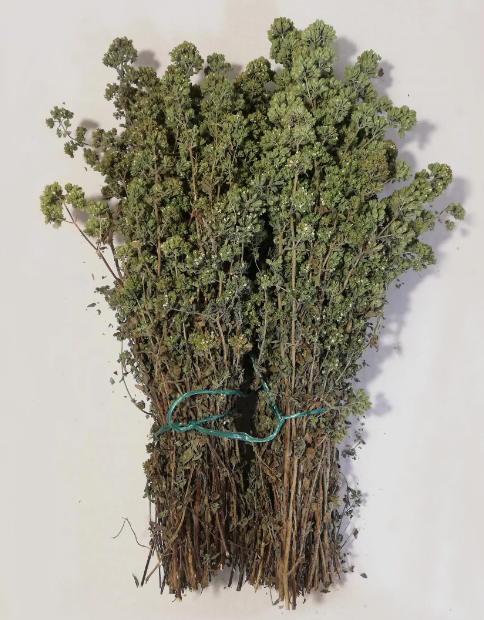Crete, the largest of the Greek islands, is renowned for its rich history, stunning landscapes, and vibrant culture. Among its many treasures is a profound tradition of herbalism that dates back thousands of years. The island’s unique climate and diverse ecosystems provide an ideal environment for a wide variety of medicinal plants. These plants have been used by Cretans for generations to promote health and well-being. This guide delves into the world of Cretan herbalism, exploring its history, key medicinal plants, and their traditional uses.
The Historical Roots of Cretan Herbalism
Cretan herbalism is deeply rooted in ancient history, with the Minoans being among the first to document the use of medicinal plants. The ancient texts and archaeological findings suggest that the Minoans utilized herbs for healing purposes as early as 2000 BCE. Over the centuries, the knowledge of herbal medicine was passed down through generations, influenced by the Greeks, Romans, Byzantines, Venetians, and Ottomans who occupied the island. This rich tapestry of cultural influences has contributed to a robust tradition of herbal medicine that continues to thrive today.
Key Medicinal Plants of Crete
Crete’s diverse flora includes many plants with potent medicinal properties. Here are some of the most notable medicinal plants traditionally used in Cretan herbalism:
Dictamnus (Dittany of Crete)
Dictamnus, also known as Dittany of Crete, is one of the island’s most famous medicinal plants. This small, aromatic shrub grows wild on the rocky slopes of Crete and has been revered for its healing properties since antiquity. Ancient Greeks believed it had miraculous powers and used it to treat wounds, stomach ailments, and respiratory issues. Today, dittany is still used in herbal teas and tinctures to soothe digestive problems and promote overall wellness.
Malotira (Cretan Mountain Tea)
Malotira, or Cretan Mountain Tea, is a species of the sideritis plant that grows in the mountainous regions of Crete. Traditionally, it has been used as a remedy for colds, coughs, and respiratory infections. Its anti-inflammatory and antioxidant properties make it a popular choice for boosting the immune system. Malotira is typically prepared as an herbal tea, providing a comforting and medicinal beverage.
Sage (Salvia fruticosa)
Sage, known locally as “faskomilo,” is another essential herb in Cretan herbalism. It is widely used for its antiseptic, anti-inflammatory, and antioxidant properties. Sage tea is commonly consumed to alleviate sore throats, digestive issues, and menopausal symptoms. In addition, sage leaves are often used in culinary dishes, adding a fragrant and healthful element to Cretan cuisine.
Thyme (Thymus capitatus)
Thyme, or “thymari” in Greek, is a ubiquitous herb in Crete, known for its strong antiseptic and antibacterial properties. It has been traditionally used to treat respiratory conditions, infections, and digestive disorders. Thyme is also a key ingredient in many Cretan dishes, providing both flavor and health benefits. Its essential oil is used in aromatherapy and natural remedies for skin conditions and muscle pain.
Oregano (Origanum vulgare)
Oregano, known as “rigani,” is a staple in both Cretan herbalism and cuisine. Its antimicrobial, antifungal, and anti-inflammatory properties make it a versatile medicinal herb. Oregano tea is traditionally used to treat colds, flu, and digestive problems. The essential oil of oregano is a potent natural remedy, often used to combat infections and support immune health.
Traditional Uses and Modern Applications
The traditional uses of these medicinal plants have been validated by modern scientific research, which has confirmed many of their health benefits. Today, Cretan herbalism continues to thrive, blending ancient wisdom with contemporary practices. Herbal remedies are widely available in local markets, health food stores, and pharmacies. Many Cretans still grow medicinal herbs in their gardens and use them in daily life for cooking, teas, and natural remedies.
Herbal Teas
Herbal teas are a cornerstone of Cretan herbalism. Teas made from dittany, malotira, sage, thyme, and oregano are commonly consumed to promote health and prevent illness. These teas are not only medicinal but also offer a delightful way to experience the flavors and aromas of Cretan herbs.
Tinctures and Essential Oils
Tinctures and essential oils extracted from Cretan herbs are used for their concentrated medicinal properties. These preparations are often applied topically or taken orally to treat various ailments. Essential oils from thyme, oregano, and sage are particularly valued for their potent antimicrobial effects.
Culinary Uses
In Cretan cuisine, herbs play a vital role in flavoring dishes and providing health benefits. The use of fresh and dried herbs in salads, stews, and marinades is a testament to the island’s holistic approach to health, where food and medicine are closely intertwined.
Embracing Cretan Herbalism
For those interested in exploring Cretan herbalism, visiting the island’s herb gardens, markets, and apothecaries can provide a deeper understanding of this ancient tradition. Guided tours and workshops are available, offering hands-on experiences in identifying, harvesting, and using medicinal plants.
Conclusion
Cretan herbalism is a living tradition that connects the island’s rich history with its natural bounty. The use of medicinal plants such as dittany, malotira, sage, thyme, and oregano reflects a deep understanding of the healing power of nature. By embracing these traditional practices, both locals and visitors can enhance their well-being and gain a greater appreciation for the ancient art of herbal medicine. Whether you are sipping a soothing cup of Cretan mountain tea or incorporating aromatic herbs into your cooking, the wisdom of Cretan herbalism offers a path to health and vitality rooted in the natural world.


